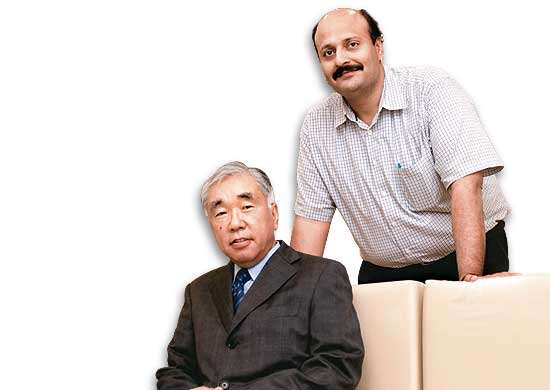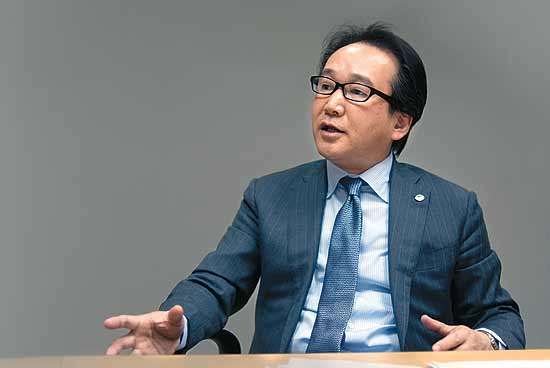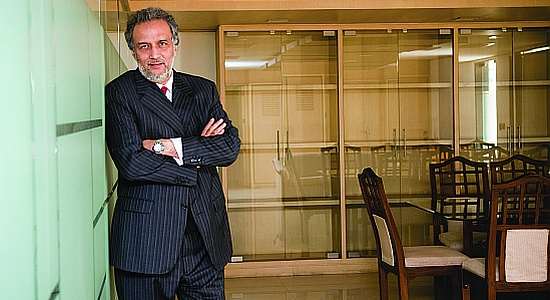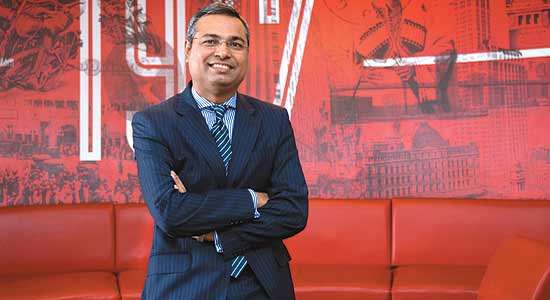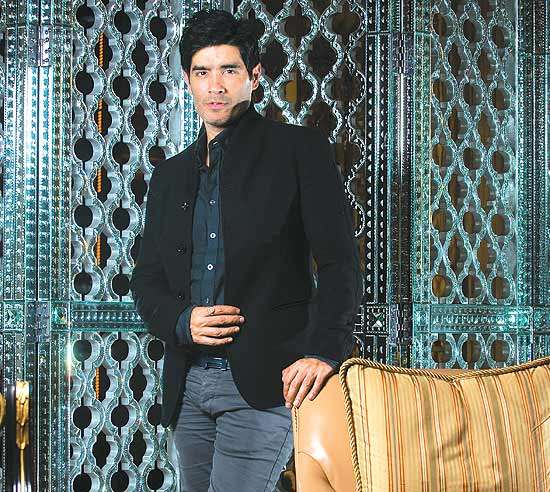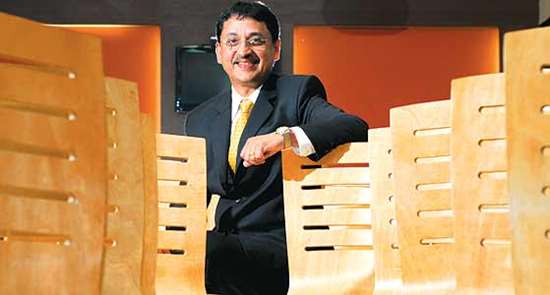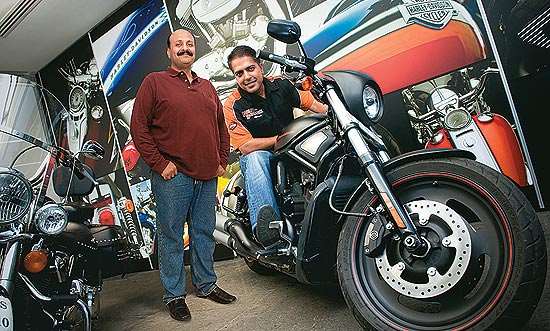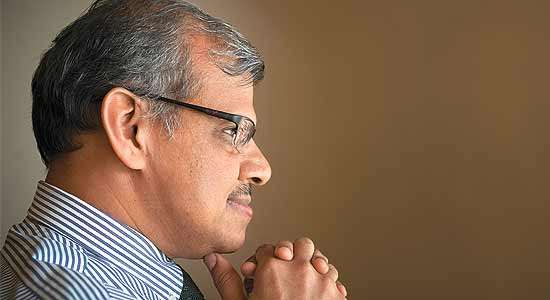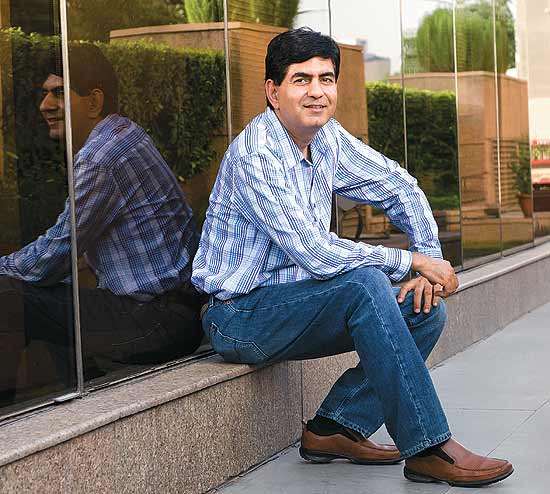Kensaku Konishi, President and CEO of Canon India is a 32-year veteran in the company.
Dr Amit Kapoor, Honorary Chairman of the Institute for Competitiveness and Professor of Strategy at Management Development Institute, spoke with him at Canon India’s headquarters in Gurgaon about the challenges the company faces and the strategy it is following to grow in India.
You were in Hong Kong for many years. How is the Indian market different from that market?
I have worked in Australia, Hong Kong, Singapore and the US. Salesmen in the US and Hong Kong think they are successful if the product they are selling is in the top-ten or top-three category, sales-wise. On the other hand, in Australia and Singapore, salesmen consider themselves successful if they reach a certain level of sales; it is a target-oriented approach. I believe that India is similar to Singapore and Australia.
One can’t say which of the two approaches is better; it’s just a different way of working.
How would you define strategy from Canon’s point of view?
A strategy must have a dream or motivation behind it. I ask people to dream what the company can be five or ten years from now. I think Canon’s business should be bigger, not only for our people, but also for our channel partners. You need to create a company that your children would like to join, and to realise this dream, you need a strategy, a plan and investment.
Canon India’s 4Cs
Customers
- Looking for solutions rather than functions.
Competition
- Need to lead the market, create new market or new value.
- Combination of blue ocean and red ocean strategies.
Context
- More and more digitisation of products.
- Regional differences in India.
Company
- Expanding direct and indirect sales.
- Expanding into medical equipment/ robotics.
- Focus on imaging (capturing, archiving or printing images).
- Creating long-term relations with customers and channel partners.
So what is your ten-year dream?
At present, Canon is a $34 billion company worldwide. Ten years from now, India should be at least 5-6% of the value of Canon’s consolidated global sales. The company should be able to make a significant contribution in bringing joy to the lives of Indians.
That’s the reason why we are here. We are not working for Japan, but for India. We want people’s lives to be happier, profitable and efficient by using our products and technology. We believe in creating long-term relations.
How do you foresee the Indian market growing?
In 2010, we are aiming to grow by about 50%—from Rs 840 crore [in 2009] to at least Rs 1,200 crore. From 2007 to 2009, our average year-on-year growth was about 30%. We believe we can easily achieve a yearly growth of 30%. We are ideally looking to double our market in India every two-three years.
I believe that rural India has big potential. But the challenge for us is going to be in providing support and delivery.
What is happening in the industry right now? How are things changing?
All products are converting to the digital format. Cameras used to be analogue, now they are digital, and the same goes for printers and copiers. A customer now looks for more solutions, rather than just functions. The market trend has changed from buying a product box to buying a set of solutions or value. We must change our marketing and sales strategy accordingly.
If you look at cameras specifically, earlier, one family used to have one camera and it was used only for special occasions. Now, because of technology, price and other reasons, the camera has become a personal gadget.
If we look at enterprise customers, they have moved from purchasing products to leasing or renting them. As we believe that every service should be all-in-one based on the need, we decided to provide document management services to enterprises.
Value-Chain Analysis
Operations
- Fully automated manufacture of cartridge, toner and small cameras.
- High-level cameras manually assembled.
- Focus on automated manufacturing.
- Expansion of imaging to medical devices and robotics in future.
Distribution
- Indirect and direct sales.
- Canon Image Lounge/ Image Express for consumers and Business Solutions Lounge (touch-and-feel).
- Change from commissions based on machine sales to commissions based on revenue.
After-sales service
- Specialised/ customised solutions to business clients.
- Photography workshops and tours for camera customers.
- Managed document services for corporate customers.
So how is Canon providing solutions or value to the Indian customers?
The biggest challenge for us at this point is offering a venue to customers to experience Canon’s products. Since 2003, we have been organising campaigns in all major cities in India. These city campaigns include technical seminars, road shows etc., and take place over three to six months in every city. The idea is not only to advertise, but also to grow the brand in the minds of our channel partners as well as our customers.
This year we came up with the concept of the Image Express—a ‘truck showroom’ that travels from city to city, giving customers the chance to touch and feel our products. We started with Ahmedabad and have already visited 18 cities, and in every city we attracted around 7,000 to 10,000 customers. Our aim is to cover one city per week, and take this unique experience zone to 38 Indian cities.
At the Canon Image Lounges in Gurgaon, Mumbai and Bangalore, which we opened in 2008, customers can touch or feel any camera or product. People can check different accessories like lenses or printers and discern for themselves what the difference between entry-level, mid-level and high-level products is. We are the first ones in the industry to open such an experience zone and we think that customers will see value in terms of functions, rather than just price.
The next big thing is going to be about providing a solution and access to the true value of a product.
Also, geographically, India is a big country and I cannot visit every city we operate in everyday. The most I can do is visit each city every month. It is a big challenge to communicate with the end-users of our products through the sales team. The importance of having middlemen who can deliver and consolidate sales, and monitor progress is high.
Of the two Indias—urban and rural—you are still focused on urban markets. Do you think Canon will have an impact on Indian villages somewhere down the line?
Interestingly, if you look at the response to the Image Express campaign from rural India and tier-1 and tier-2 cities, there is hardly any difference. I think that more than 50% of our growth will come from tier-2 cities.
I also believe that rural India has big potential. But the challenge for us is going to be in providing support mechanism and delivery. It is easy to sell a machine, but I don’t want to sell a product without the promise of providing necessary services. We will go step-by-step and once we are able to confirm that service delivery will not be a problem, we can look seriously at the rural market.
Business and strategy is also about not doing certain things. What is it that you decided not to do in the Indian market?
We do not want to start price competition. Instead, we are willing to undertake a study with our customers to understand how we can add value to their final product, in order for them to secure additional profits and keep margins high.
How are you differentiating yourself?
The role of sales channels is becoming extremely important, and how we deliver value to the end consumer through our channel partners is challenging.
We need to take every opportunity to create a brand image and brand loyalty in the minds of the consumers. For example, we organise tours for the users of our cameras—say a seven-night photography tour led by a professional photographer, where they are taught how to take pictures, use different lenses and so on. Such activities are gaining importance.
We give importance to creating a long-term relation with our end users and channel partners. We want to create win-win relations. If we win and the customer loses, the customer will never give us a repeat order, and if we lose and the customer wins, we cannot keep our current level of service support.
What are you doing different for corporate consumers?
If we talk about the printing business, there is a very interesting trend now—management document services or MDS.
Different division heads purchase different printers. This means that there are several printers in one office. To add further to the problem, purchase bills go to the IT or procurement department and the operational costs to another department. In the end, the organisation finds it difficult to control the number of prints taken and because of the number of devices, cannot calculate the exact print-per-page cost. We offer a solution, especially to big corporations, to see who takes how many prints.
So effectively, you are increasing their operational efficiency?
That’s right. We manufacture multi-function devices (MFDs) in which we consolidate, say, five printers and networking. Each user is given an ID/ authentication number so that we know exactly who takes how many copies and prints. The cost is consolidated per click and is, therefore, very visible and secure.
The customer’s print cost is cut. We have seen that 7% of prints are not taken by the customer who ordered them; they forget or don’t need it anymore. Once we introduce a print management system, immediately 7% of print costs go down. If we introduce this system to a big customer, then 30–50% of the customer’s total print cost is cut immediately.
The biggest change we have seen in the industry is technology. What will be the next technological paradigm?
This depends on the product. For example, in cameras, megapixels have already reached a high, as has shutter speed. The competition will now be in what kind of applications are being given to the customer, and ease of accessibility of these applications. In other words, it is going to be about providing a solution and access to the true value of a particular product.
How do you see convergence of devices impacting Canon?
A mobile phone is one of the most common such device. You can take calls, check your emails, take pictures and so on. If you look at mobile phone cameras, you see that their shutter speed is usually slow. We believe that mobile cameras are expanding our potential customer pool. Once a user takes a picture and shares it with friends and family, s/he will go on to buy a special device such as a digital compact, and then they move onto a digital SLR. This increases our market.
Technological innovation is the most important thing in this business. Canon has registered a large number of patents in the past. What new technology will Canon look at?
We are very focused on imaging. We are slightly expanding imaging to medical equipment using our scanning technologies. Recently, we also announced that we are getting into robotics using our production technology. So keeping the core of imaging, we are expanding step-by-step to new things. Our base is very standardised and focused on imaging—or capturing, archiving and printing images.
Robotics is different from imaging. How does this fit in with your operations?
This will probably take at least three to five years. We want to start studying this and spend time and money to bring out something good. At this moment I am not sure how we will make or manage it. Let’s just say that based on our production technology we are trying to expand into something new.
How are you ramping up manufacturing capability?
Canon is famous for using a combination of automated processes and assembling in manufacturing to ensure quality. As long as a machine can do a work, we let it. But we leave more challenging tasks in the hands of mature factory workers. This makes our cost very competitive. It’s a combination of a great level of automation and assembling. For example, our cartridge or toner production is fully automated. But as a high-level camera needs a lot of adjustment and assembling, a professional factory worker assembles it.
If I say that in business, there are two kinds of strategies that firms could follow, one—run the same race faster and the othe—choose to run a different race, where do you think you are?
I think that we have to cover both. The majority of competition between companies happens with the same target and same strategy, but we also need to lead the market, create a new market or create new value. A lot of people say we should have a blue ocean strategy (the high growth and profits an organisation can generate by creating new demand in an uncontested market), but it is very difficult to see what it will do.
We are struggling with the competition in the red ocean (an existing market), but that will give us our daily bread and butter, so we want to stay ahead. At the same time, we need to make an investment in a new area to ensure future development.
CEOs across India speak on strategy and leadership, in an exclusive series developed jointly by Outlook Business and the Institute for Competitiveness. The strat speak series was published with Outlook Business on November 13, 2010.

